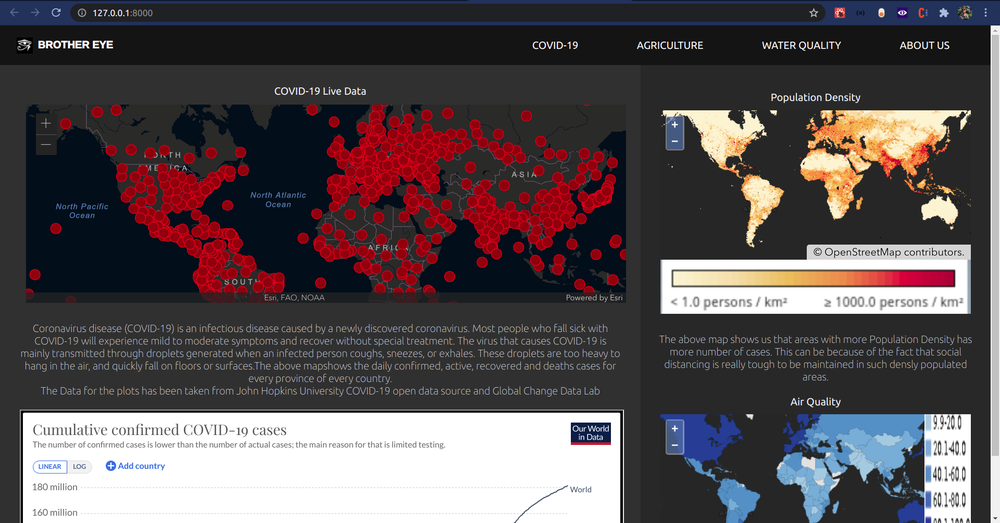BROTHEREYE is a fun data visualisation tool that uses data obtained from NASA Earth Observations, MODIS, Copernicus Landsat and USGS. BROTHEREYE renders interactive maps using OpenLayers thus making it easy for the user to study the data while also making it interactive for users who are there just for some infotainment.
It was important for us to develop something like BROTHEREYE as in most of the sites which helps in ESA and NASA earth data visualization literally opens up the entire world map takes up a lot of time. With BROTHEREYE you can break up the data into your convenient size and can concentrate on a particular region or you can look at the Big Picture all together.
BROTHEREYE makes use of the Imagery API, takes the images and shows it as a web map service using the worldwind web. We have provided some sample layers which we think might have greater significance over others. We will be adding more layers for users to provide a wide range of information under a single roof.
We hope to make a complete site where you get to visualize, query, store and download datasets of your choice from whatever data is available using ESA and NASA APIs and to make it more interactive for users of all age range.

BROTHEREYE Home page (above)
BROTHEREYE Agriculture data page (below)

After seeing some sample sites provided by the Challenge resources, we realised we can build an upgraded version of these sites, keeping the overall view concise but informative and interactive at the same time. Basically, we aimed at serving the huge data within your grip.

